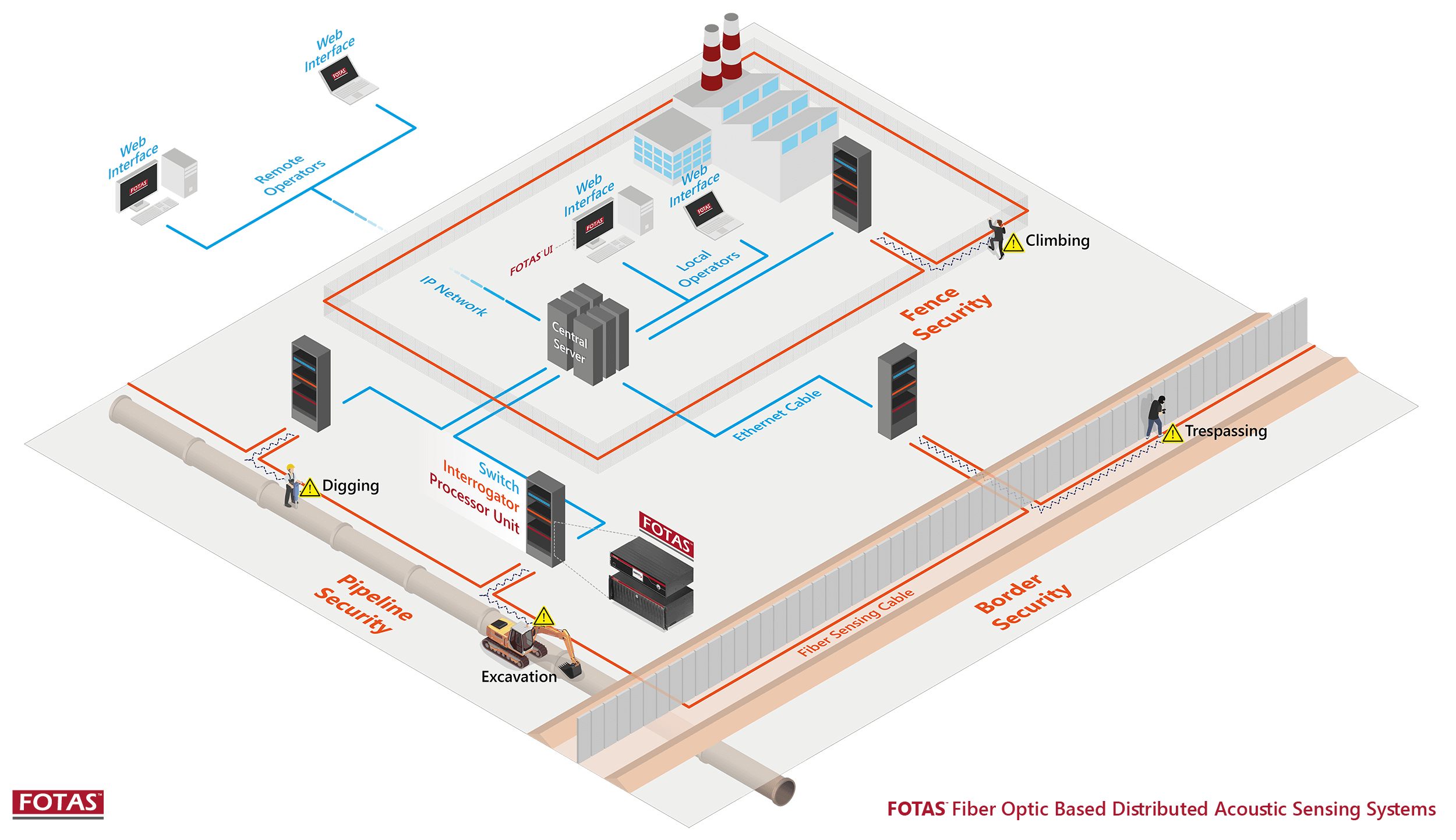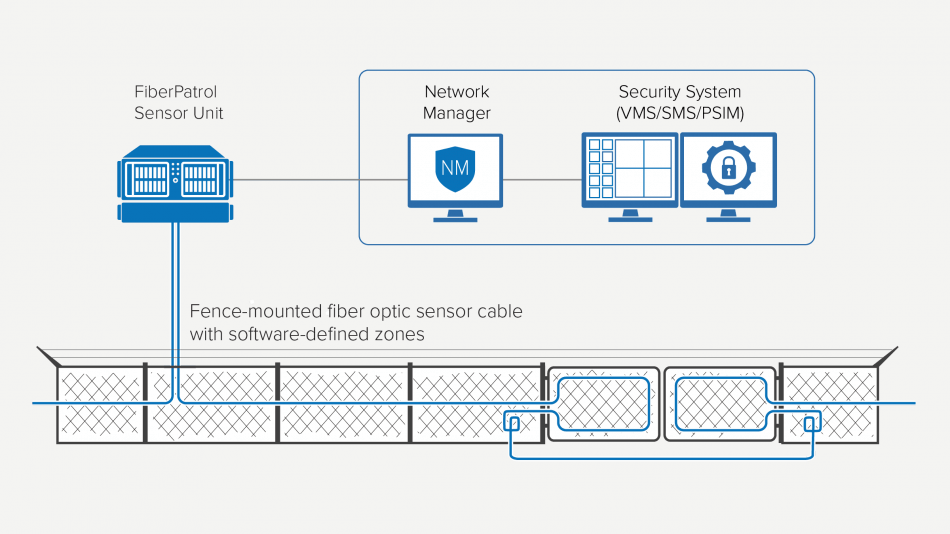Exploring the Power of Security Fibers for Cutting-Edge Monitoring and Protection
Exploring the Power of Security Fibers for Cutting-Edge Monitoring and Protection
Blog Article
Why Fiber Optic Safety And Security Solutions Are the Future of Protection
The change to fiber optic safety systems notes a substantial advancement in the world of protection, driven by their outstanding data transmission abilities and durability to outside interferences. As the landscape of protection advances together with emerging modern technologies such as AI and IoT, the possibility for fiber optics to boost and redefine protection frameworks ends up being progressively noticeable.
Advantages of Fiber Optic Equipments
One of the main advantages of fiber optic systems is their premium data transfer capability, which facilitates the transmission of huge volumes of data over cross countries without substantial loss. This characteristic is specifically advantageous for security applications that require the continuous surveillance and transfer of high-def video feeds, sensing unit information, and various other important information. Optical fiber can fit the expanding demands of contemporary safety systems, ensuring that information continues to be intact and trusted.
Furthermore, fiber optic cords are less susceptible to electro-magnetic disturbance, which can be a significant issue in environments with various electronic devices. This resistance boosts the stability of the information being transferred, consequently lessening the risk of information breaches or system failures. Fiber optic systems are inherently extra secure than typical copper wires, as touching right into a fiber optic line without discovery is exceptionally challenging.
The toughness of fiber optic cable televisions likewise adds to their appeal. They are resistant to ecological factors such as wetness and temperature level variations, decreasing maintenance costs and boosting system durability. In general, these benefits position fiber optic systems as a durable and effective choice for modern security facilities, making sure dependable and secure data transmission.
Improved Information Transmission Speed

The capacity to transmit large amounts of data quickly promotes the seamless assimilation of high-def video clip feeds and progressed analytics. Security systems can now refine and assess information in real-time, enhancing feedback times and situational awareness. Additionally, fiber optic links sustain longer transmission ranges without destruction of signal top quality, making them suitable for large safety and security networks.
The enhanced rate of fiber optic systems not only improves the efficiency of safety and security operations however likewise minimizes latency. This is specifically vital in vital scenarios where prompt decision-making can prevent safety violations or alleviate prospective threats. As organizations remain to prioritize security and effectiveness, the need for quick and trusted information transmission will undoubtedly strengthen fiber optic systems as a cornerstone of contemporary safety and security facilities.
Resistance to Disturbance
Fiber optic safety systems regularly demonstrate outstanding resistance to electro-magnetic interference, a crucial benefit in environments susceptible to digital sound. Unlike standard copper cords, which can be negatively affected by electro-magnetic fields, radio regularity interference, and various other forms of electric disruption, fiber optic cables make use of light to send data. This integral property guarantees that the signals stay clear and unaltered, regardless of bordering electronic task.
Making use of glass or plastic fibers in fiber optic innovation creates a barrier versus interference, enabling trustworthy data transmission even in difficult situations such as commercial facilities, city areas with high digital traffic, or places near radio towers. This particular substantially lowers the likelihood of signal deterioration or loss, making fiber optic systems particularly appropriate for protection applications where integrity and accuracy of data are paramount.
Additionally, this resistance to disturbance enhances the general efficiency and reliability of protection systems, making sure that surveillance and sharp systems function perfectly. In a globe where protection is progressively threatened by advanced innovations, the strength of fiber optic systems stands out as a critical function, strengthening their standing as a vital element of contemporary protection framework.
Cost-Effectiveness With Time
Significant expense financial savings can be attained with time with the execution of fiber optic protection systems. While the first financial investment might appear higher compared to standard copper-based systems, the long-lasting monetary benefits become noticeable through decreased operational and maintenance costs (fiber security). Fiber optic cables are inherently much more resilient and less susceptible to environmental variables, which converts to reduce substitute and repair service costs over their lifespan
Additionally, fiber optic systems require much less power to operate, which better reduces power costs. Boosted data transmission abilities enable for less repeaters and amplifiers, lessening equipment investment and simplifying setup procedures. The scalability of these systems also adds to cost-effectiveness, as organizations can broaden their security facilities without sustaining significant extra expenses.
One more variable to consider is the boosted performance in monitoring and reaction capacities that optical fiber give. Boosted real-time data transmission can result in quicker case feedback times, potentially mitigating losses and responsibilities connected with safety and security breaches. Altogether, the lasting benefits of fiber optic protection click for info systems not only warrant the preliminary expense however additionally place them as a financially prudent option for companies looking for durable defense options.

Future Developments in Safety
Progressing technologies are set to transform safety systems, integrating expert system (AI) and maker hop over to here understanding to enhance risk discovery and feedback capabilities. These innovations will certainly allow safety systems to assess substantial quantities of information in real-time, identifying patterns and anomalies that indicate prospective dangers. This positive technique will certainly make it possible for faster decision-making and much more efficient occurrence actions.
Furthermore, the unification of the Net of Points (IoT) is leading the means for interconnected security devices, offering comprehensive surveillance and monitoring. Smart sensing units can relay information about ecological adjustments, while automated informs can inform safety and security workers promptly of questionable activities.
Furthermore, the evolution of biometric technologies will certainly better strengthen protection image source systems. Facial recognition, finger print scanning, and retina identification are becoming more advanced, offering layers of authentication that are tough to bypass.
Final Thought
To conclude, fiber optic security systems stand for a significant advancement in security modern technology, providing unmatched information transmission rate, resistance to electro-magnetic interference, and long-term cost-effectiveness. As the need for sophisticated protection options continues to expand, the combination of optical fiber with emerging technologies such as AI, IoT, and biometrics will certainly further boost safety frameworks (fiber security). The combination of these innovations will certainly ensure an extra protected and receptive environment, strengthening fiber optics as a foundation of future security systems
Report this page